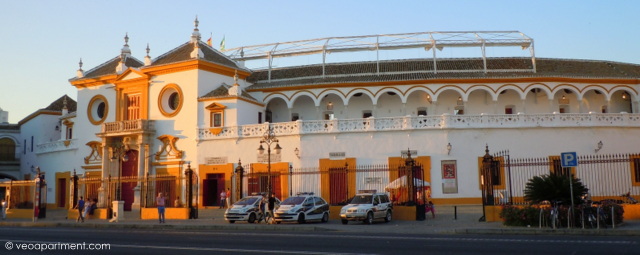
“Bullfighting is the only art in which the artist is in danger of death and in which the degree of brilliance in the performance is left to the fighter’s honour.” Ernest Hemingway Death in the Afternoon 1932
After flamenco, watching a bullfight is seen as one of the top priorities for getting in touch with the local culture of Spain, and although it’s perhaps less central than it was even 50 years ago, in the south bullfighting is still both popular and big business, as well as a source of many iconic images. So whether you regard it as an inhumane bloodsport or a form of art, like Hemingway did, there remains a fascination with the matador standing alone in the ring in the glare of the late afternoon sun with his cape and sword, pitting his skill against the brute strength of the bull.
Seville’s bullring (La Plaza de Toros de la Real Maestranza de Caballería de Sevilla) is located next to the river in the Arenal neighbourhood. It’s the oldest in Spain, the first corrida having been held there in 1765, and the original model on which most later bullrings were based, with its carpet of yellow sand (albero) and circular tiered seating rising to an arched colonnade that protects the most expensive seats from the sun. When there are no bullfights you can still visit the arena and the bullfighting museum and experience its unique atmosphere for yourself.
The main bullfighting season is in April, during the Spring Fair. This year the daily corridas (the standard bullfight) run from April 10 to April 22, followed by a season of novilladas (fights featuring young bulls and novice bullfighters) on Sundays during May. There is also a short season in late September, during the Feria de San Miguel. Prices depend on the type of bullfight and on where you’re sitting relative to the arena and the sun (sol, sombra, or sol y sombra) and for corridas start from 13 euros (if you don’t mind sitting with the sun in your eyes) and go up to 155 euros ‘face value’ for the best seats.
For a great view of the bullring from across the river, stay in one of our apartments on Calle Betis.
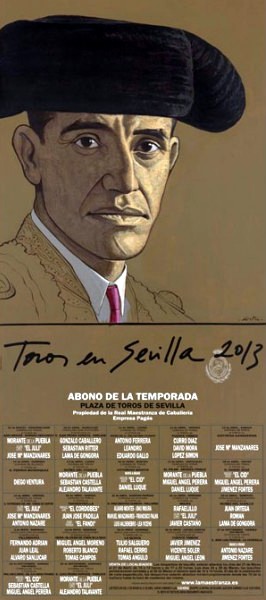
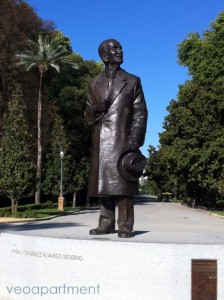
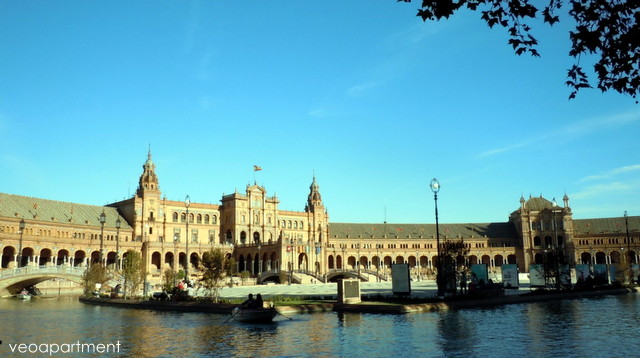
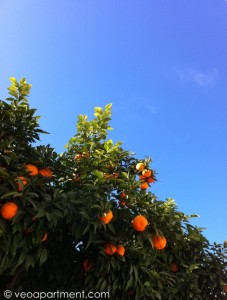
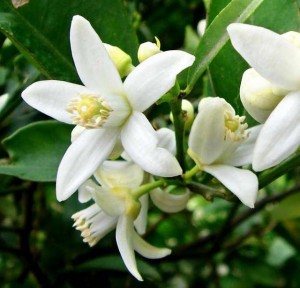
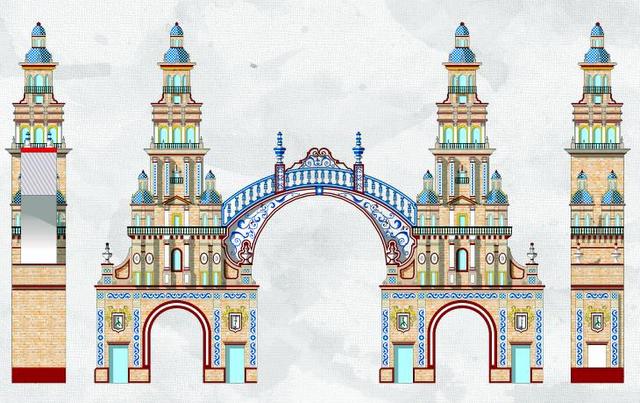
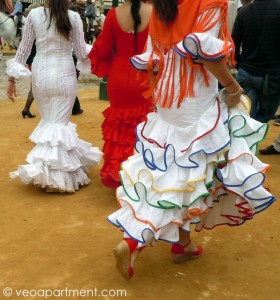 The first April Fair was held in 1847 on the Prado (field) de San Sebastian, just outside the old city walls, which at that time were still standing, and it was initially a cattle and horse fair intended as a modern version of the old mediaeval fairs. Strangely for what has become such a Sevillano event, it was the brainchild of a Catalan, Narciso Bonaplata, and the Basque José María Ybarra. As the years passed the Fair gradually began to acquire the character it has today. The horses and carriages have remained a staple of the fair, at least during the day, as have the traditional traje corto (short jacket and tight trousers) of the men and colourful flamenco dresses of the women, but the cattle are long gone. The first electric lights appeared in 1874, followed shortly by the paper globes that are so typical today, and the first commercial casetas. In 1973 the Feria moved to its present home.
The first April Fair was held in 1847 on the Prado (field) de San Sebastian, just outside the old city walls, which at that time were still standing, and it was initially a cattle and horse fair intended as a modern version of the old mediaeval fairs. Strangely for what has become such a Sevillano event, it was the brainchild of a Catalan, Narciso Bonaplata, and the Basque José María Ybarra. As the years passed the Fair gradually began to acquire the character it has today. The horses and carriages have remained a staple of the fair, at least during the day, as have the traditional traje corto (short jacket and tight trousers) of the men and colourful flamenco dresses of the women, but the cattle are long gone. The first electric lights appeared in 1874, followed shortly by the paper globes that are so typical today, and the first commercial casetas. In 1973 the Feria moved to its present home.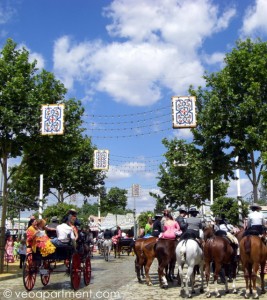 During the day it’s the horses and carriages that take the attention, along with their riders, everything and everyone done up to the nines to parade around the fairground, and for anyone with a love of horses this alone is enough to make Feria worth a visit. At night, however, Feria is quite a different experience. The lights are all switched on, and the party begins. In the casetas there is much drinking of rebujitos (sherry with 7-up) and dancing of Sevillanas (a folk dance with flamenco-style music), that often carries on until dawn. Next to the main fairground, in the Calle del Infierno (Hell Street) is a funfair, with all the traditional rides and typical fast-food stalls.
During the day it’s the horses and carriages that take the attention, along with their riders, everything and everyone done up to the nines to parade around the fairground, and for anyone with a love of horses this alone is enough to make Feria worth a visit. At night, however, Feria is quite a different experience. The lights are all switched on, and the party begins. In the casetas there is much drinking of rebujitos (sherry with 7-up) and dancing of Sevillanas (a folk dance with flamenco-style music), that often carries on until dawn. Next to the main fairground, in the Calle del Infierno (Hell Street) is a funfair, with all the traditional rides and typical fast-food stalls.